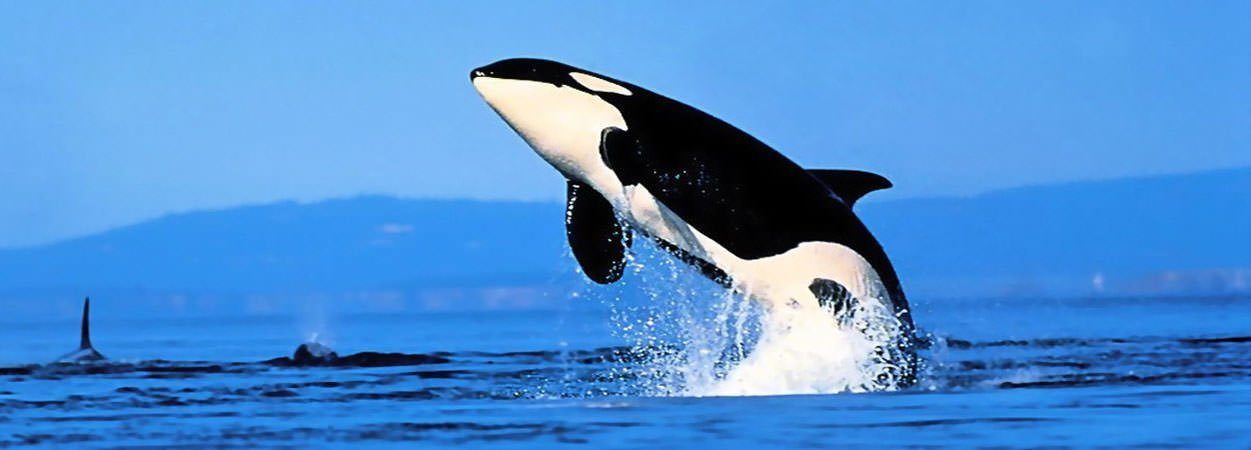Orcas, more widely known as killer whales, are found in all oceans of the world but are most common in the frigid Arctic and Antarctic regions. They are the topmost predators in the ocean and are known to be highly social and intelligent. Here are 10 interesting facts about this amazing animal.
#1 KILLER WHALE BELONGS TO THE DOLPHIN FAMILY
Orcas, or killer whales, belong to the dolphin family. Hence in spite of the name, they are more closely related to dolphins than to whales and belong to the order Delphinidae. Killer whales are the largest existing members of the dolphin family. The largest orca on record was 9.8m and weighed over ten tonnes.

#2 THE NAME ORCA IS RELATED TO THE ROMAN GOD OF THE UNDERWORLD
Killer whale belongs to the genus Orcinus. It is the only recognized surviving species of the genus. The genus name Orcinus means “belonging to Orcus”. Orcus was a god of the underworld in Roman mythology. The genus name is probably due to the ferocious reputation of killer whales. In Latin Orca translates to “the shape of a barrel or cask”, most likely due to the body shape of a killer whale. It is borrowed from a Greek word used to refer to whales.
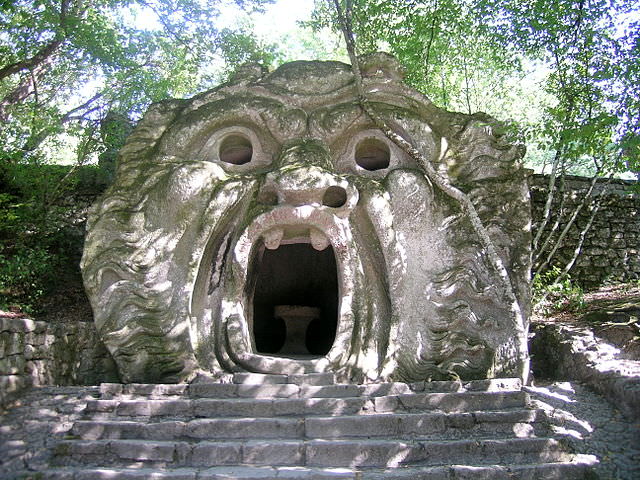
#3 It SITs ON TOP OF THE FOOD CHAIN
Orcas hunt marine mammals such as sea lions, seals, walruses and large whales. They even hunt the great white sharks. They are in fact apex predators, i.e. they have no natural predators of their own, except humans of course. Hence they are “kings of the ocean” and sit at the top of the food chain. Like wolves, orcas hunt in a pack and are called the wolves of the sea.

#4 RESIDENT ORCAS LIVE WITH THEIR MOTHERS
According to their social structure killer whales can be classified as residents and transients. While transients live in small groups, usually of 2 to 6, residents live in cohesive family groups called pods. A pod is formed when a female resident gives birth. Residents, unlike any other mammal, are known to live with their mothers for their entire life. As female orcas may live up to 90 years, at times four generations of resident killer whales travel together. According to DNA testing, resident males almost never mate with a female of the same pod.
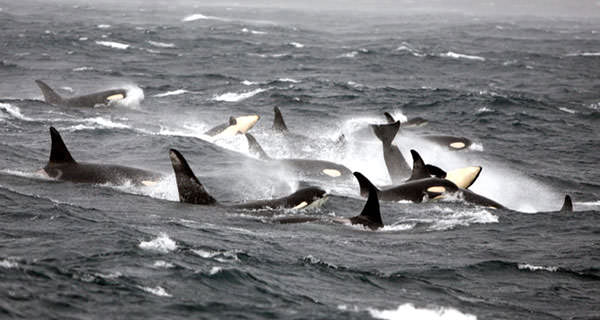
#5 THEY HAVE ADVANCED ECHOLOCATION ABILITIES
Echolocation is a kind of biological sonar used by certain animals. A sound is emitted and it travels till it encounters an object and is reflected back. The reflected sound waves are then interpreted by the emitter. Killer whales have exceptionally sophisticated echolocation abilities and are able to use them for several purposes including detection of the location and characteristics of their prey.

#6 ORCA FEMALES ROUTINELY EXPERIENCE MENOPAUSE
In animals menopause is an uncommon thing. Most animals continue to possess the ability to reproduce till they die. Only three species are known in which females routinely stop breeding years before the end of their lives. They are humans, pilot whales and orcas. Female orcas experience menopause in their 30s or 40s but they continue to live on for decades.
#7 They ARE KNOWN TO BE INTELLIGENT AND PLAYFUL
Killer whales are known to be playful. Researchers have reported incidents in which wild orcas tease humans by repeatedly moving objects they are trying to catch. They have been seen deliberately teaching skills to their kin. They can also be trained in captivity and are known for their curiousness and ability to solve problems. After sperm whales, orcas have the heaviest brain among marine mammals.

#8 IN CAPTIVITY THEir LIFE EXPECTANCY REDUCES DRASTICALLY
Due to their intelligence, playfulness and large size, killer whales are a popular attraction at aquatic parks. However captive killer whales on an average live till their 20s while wild ones are known to live much longer. This is one of the reasons why several organizations campaign against keeping orcas in captivity. Due to their efforts by 1999, 40% of the orcas on display around the world were captive born.
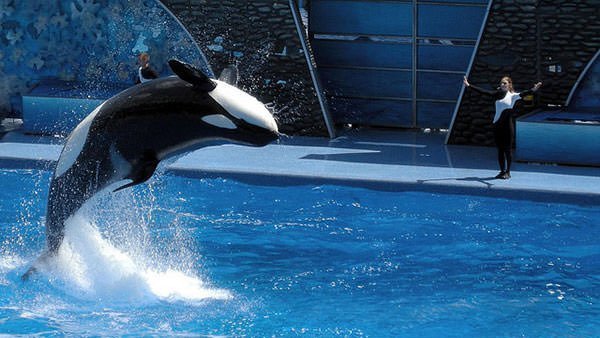
#9 WILD KILLER WHALES DON’T ATTACK HUMANS
Orcas were traditionally considered savage predators. This opinion changed after the first live capture of an orca called Moby Doll in the 1960s. People were surprised to find that Moby Doll was docile and made no attempt to attack humans. Wild killer whales are not known to attack humans. The few reported attacks on humans have usually been because they misidentified the person as a prey, and none of them has been fatal. However there are about two dozen reported attacks on humans by captive killer whales since the 1970s.
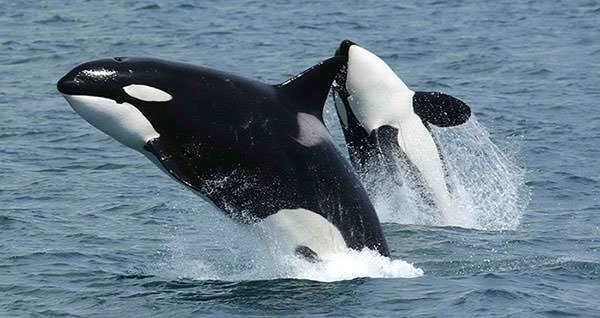
#10 THE MOST FAMOUS KILLER WHALE IS PROBABLY KEIKO
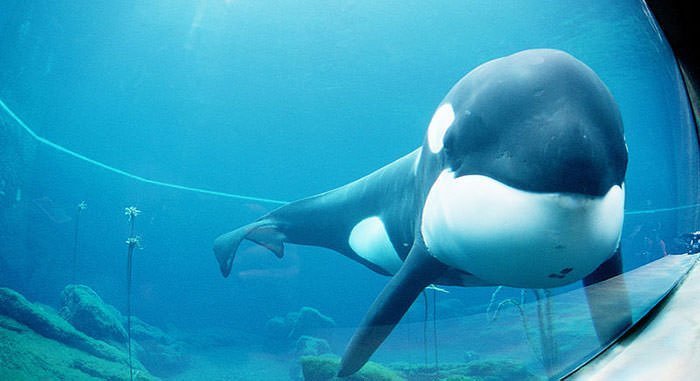
Other than Moby Doll, another famous orca was Keiko. He portrayed Willy in the 1993 American family drama film Free Willy. The film was a huge success and started a campaign to free Keiko from captivity. Preparations to return him to the wild included supervised swims in the open sea. Keiko was released in Icelandic waters in 2002 but he failed to reintegrate with wild killer whales and kept seeking human contact. He died on December 12, 2003.
Watch this amazing National Geographic video displaying the complex nature of killer whales:-
Note: This embed is taken from National Geographic. We do not claim this video. It may not work in the future.

